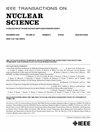中国暗物质实验数字滤波器的FPGA实现
IF 1.9
3区 工程技术
Q3 ENGINEERING, ELECTRICAL & ELECTRONIC
引用次数: 0
摘要
光暗物质的直接探测是当前国际物理学研究的热点。弱相互作用大质量粒子(wimp)是暗物质的主要候选者。2013年,CDEX-1B在$\mathrm {4\ GeV/}c^{2}$以下的自旋无关wimp中获得了最灵敏的实验结果,数据收集量为$783~\mathrm {kg\cdot day}$。2018年,CDEX-10利用$102.8~ $ mathm {kg\cdot day}$的数据,在4-5 - $\ mathm {GeV/}c^{2}$范围内获得了自旋无关wimp最灵敏的实验结果。目前正在建设中的CDEX-50预计能达到100 eV的能量阈值,这对波形数字化系统提出了巨大的挑战。然而,阈值的降低受到模拟整形系统抑制前置放大器噪声的能力的限制。因此,本文研究了在现场可编程门阵列(FPGA)上实现CR-(RC)4滤波器、梯形整形滤波器和数字惩罚最小均方(DPLMS)滤波器。DPLMS滤波器消耗的资源最多,其次是CR-(RC)4,梯形滤波器消耗的资源最少。建立了基于宽能锗(BEGe)探测器的实验平台,对不同的数字滤波器和模拟整形系统进行了比较。结果表明,DPLMS滤波器在提高前置放大器输出信噪比方面最为有效。与CDEX-1B和CDEX-10中使用的模拟整形系统相比,基线噪声的标准差从216.3 eV降低到170.0 eV。达到99%触发效率所需的能量从862 eV降低到712 eV,降低了约17.4%。这些结果可为CDEX-50波形数字化系统的升级,进一步提高暗物质探测的灵敏度提供参考。本文章由计算机程序翻译,如有差异,请以英文原文为准。
FPGA Implementation of Digital Filters for China Dark Matter Experiment
The direct detection of light dark matter is a prominent topic in international physics research. Weakly interacting massive particles (WIMPs) are the leading dark matter candidates. The scientific goal of the China Dark matter EXperiment (CDEX), located in the China Jinping Underground Laboratory (CJPL), is to detect light dark matter candidates using a high-purity germanium (HPGe) detector array. In 2013, CDEX-1B achieved the most sensitive experimental results for spin-independent WIMPs below $\mathrm {4\ GeV/}c^{2}$ , with a data collection of $783~\mathrm {kg\cdot day}$ . In 2018, CDEX-10 obtained the most sensitive experimental results for spin-independent WIMPs in the 4–5- $\mathrm {GeV/}c^{2}$ range, using $102.8~\mathrm {kg\cdot day}$ of data. The CDEX-50, which is currently under construction, is expected to achieve an energy threshold of 100 eV, which poses a huge challenge to the waveform digitization system. However, the reduction of the threshold is constrained by the analog shaping system’s ability to suppress preamplifier noise. Therefore, this article studies the implementation of a CR-(RC)4 filter, a trapezoidal shaping filter, and a digital penalized least mean square (DPLMS) filter on a field programmable gate array (FPGA). The DPLMS filter consumes the most resources, followed by the CR-(RC)4, while the trapezoidal filter consumes the least amount of resources. An experimental platform based on a Broad Energy Germanium (BEGe) detector was built to compare different digital filters and analog shaping systems. The results show that the DPLMS filter is the most effective at improving the signal-to-noise ratio of the preamplifier output. Compared to the analog shaping systems used in CDEX-1B and CDEX-10, the standard deviation of the baseline noise was reduced from 216.3 to 170.0 eV. The energy corresponding to a 99% trigger efficiency was reduced from 862 to 712 eV, a decrease of about 17.4%. These results can provide a reference for upgrading the CDEX-50 waveform digitization system and further improve the sensitivity of dark matter detection.
求助全文
通过发布文献求助,成功后即可免费获取论文全文。
去求助
来源期刊

IEEE Transactions on Nuclear Science
工程技术-工程:电子与电气
CiteScore
3.70
自引率
27.80%
发文量
314
审稿时长
6.2 months
期刊介绍:
The IEEE Transactions on Nuclear Science is a publication of the IEEE Nuclear and Plasma Sciences Society. It is viewed as the primary source of technical information in many of the areas it covers. As judged by JCR impact factor, TNS consistently ranks in the top five journals in the category of Nuclear Science & Technology. It has one of the higher immediacy indices, indicating that the information it publishes is viewed as timely, and has a relatively long citation half-life, indicating that the published information also is viewed as valuable for a number of years.
The IEEE Transactions on Nuclear Science is published bimonthly. Its scope includes all aspects of the theory and application of nuclear science and engineering. It focuses on instrumentation for the detection and measurement of ionizing radiation; particle accelerators and their controls; nuclear medicine and its application; effects of radiation on materials, components, and systems; reactor instrumentation and controls; and measurement of radiation in space.
 求助内容:
求助内容: 应助结果提醒方式:
应助结果提醒方式:


